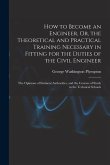The use of decoys in combat has become more advanced in recent years. Some of the newest military aircraft, such as the US Navy's F/A-18E/F Superhornet, have the capability to deploy a towline with an attached decoy when entering hostile territory as a defense mechanism against enemy threats. In steady state, the towline extends behind and below the aircraft. A major concern is the position of the towline, as aircraft maneuvers can cause the line to enter the engine plume. The high exhaust heat can cause problems, such as damaging electrical equipment and severing the line. In order to better understand the behavior of the towline, as well as setting up a method to analyze the heat transfer to the towline, computer modeling has been utilized using numerical integration with the method of characteristics. The method of characteristics has been applied to 4 hyperbolic equations of motion, leaving 2 parabolic equations of motion to be calculated at each timestep. The energy equation for heat transfer to the towline was also derived, which provides a means to find local air density and towline temperature. From these a model was created to observe towline behavior and temperature, which is shown to be consistent with past research. This model is applicable to any towed body in any medium with zero slack conditions. The effects of transient aircraft maneuvers on towline behavior in a predetermined temperature field were analyzed under different conditions using a code developed in MATLAB . This code is included such that aircraft maneuvers in unique temperature fields can be analyzed for future research.
Hinweis: Dieser Artikel kann nur an eine deutsche Lieferadresse ausgeliefert werden.
Hinweis: Dieser Artikel kann nur an eine deutsche Lieferadresse ausgeliefert werden.








